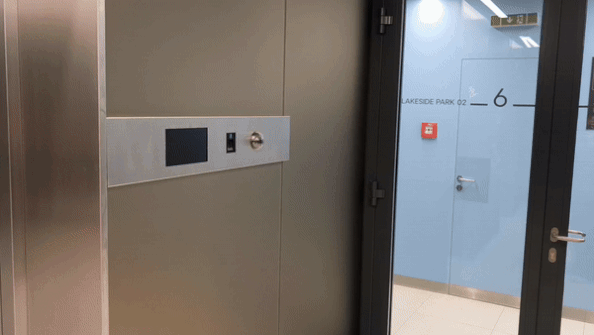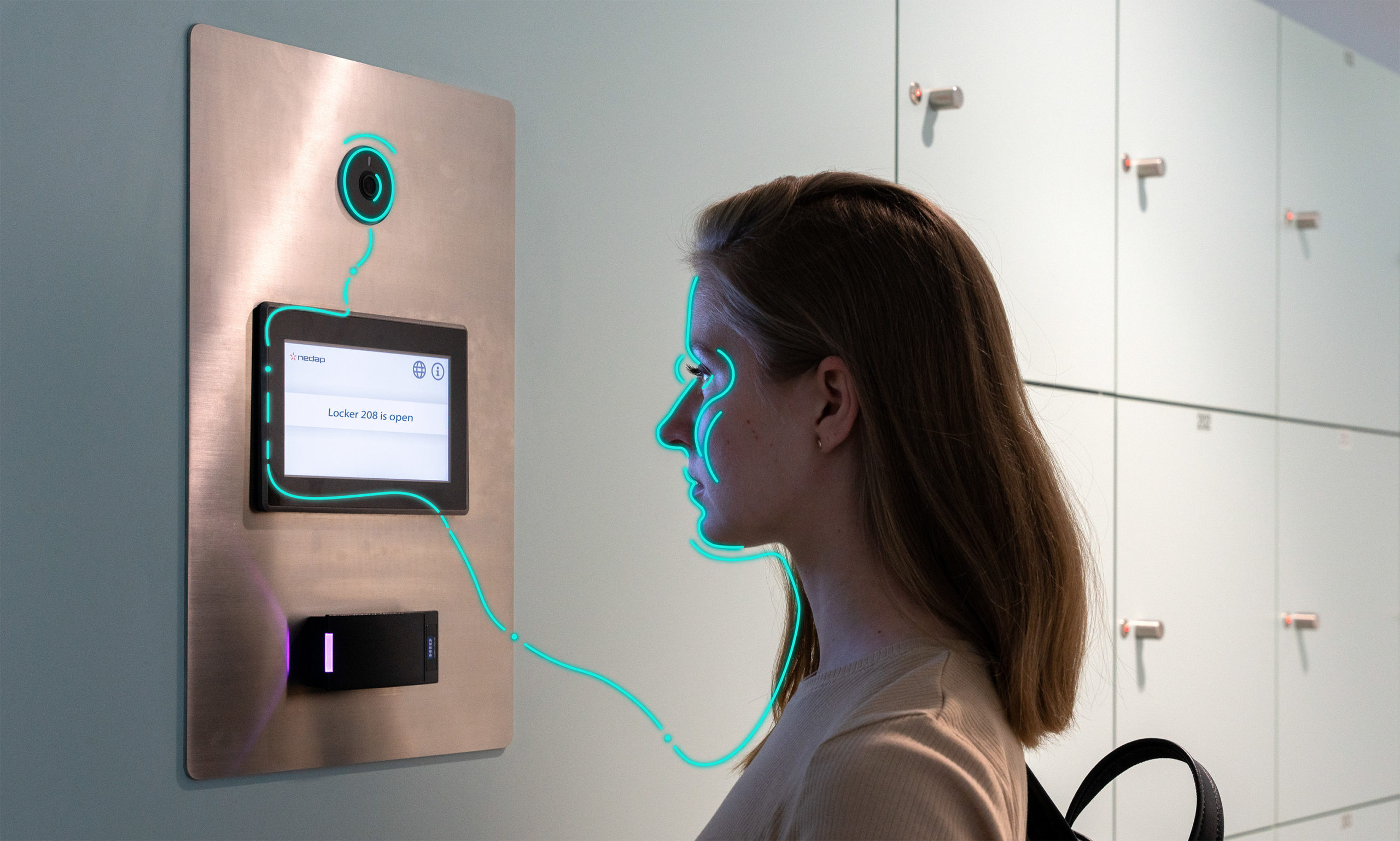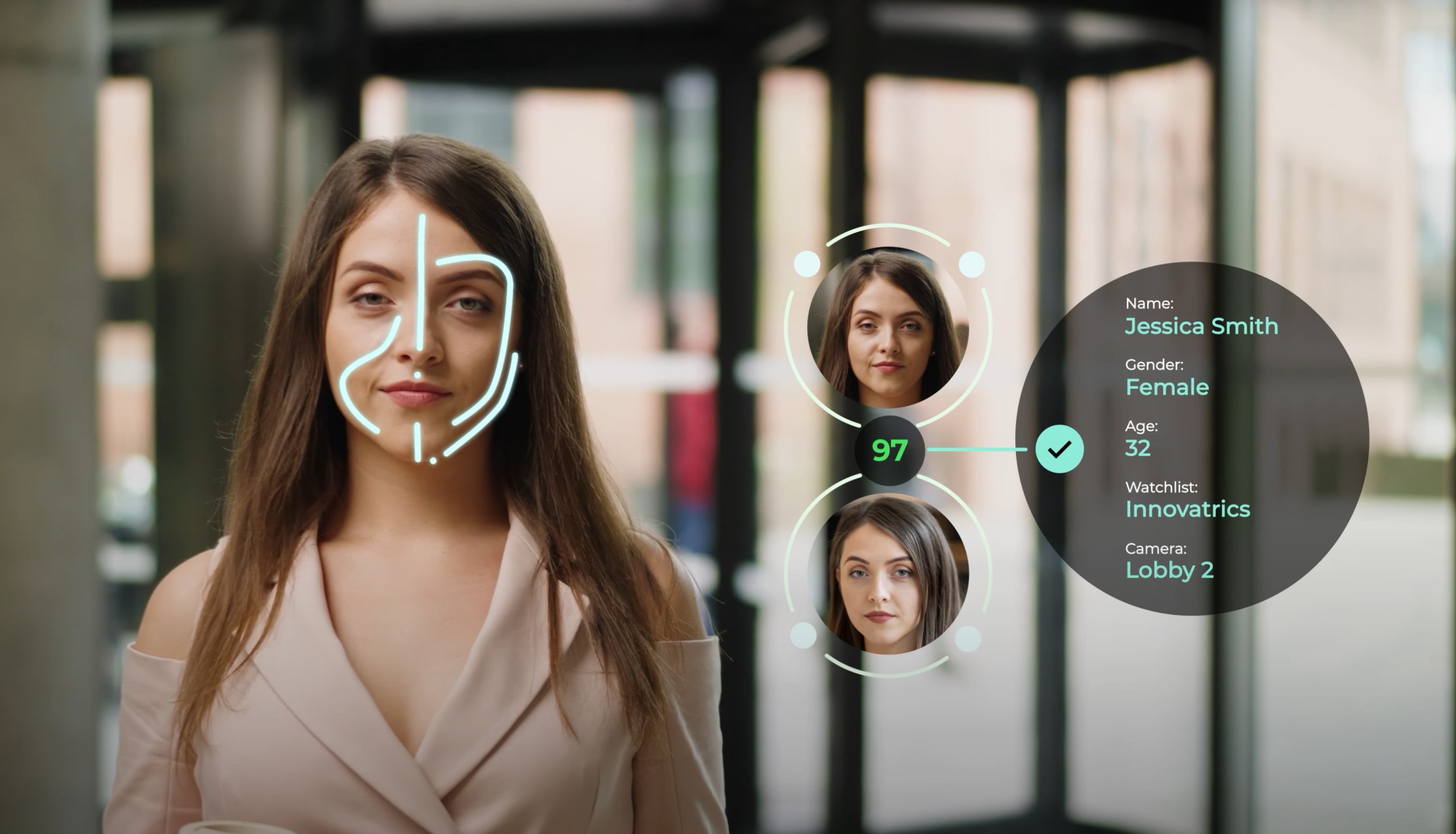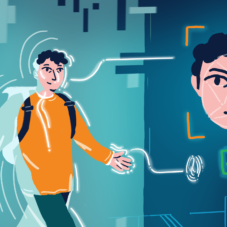What If a Building Could Think? Envisioning the Future of Biometric Architecture
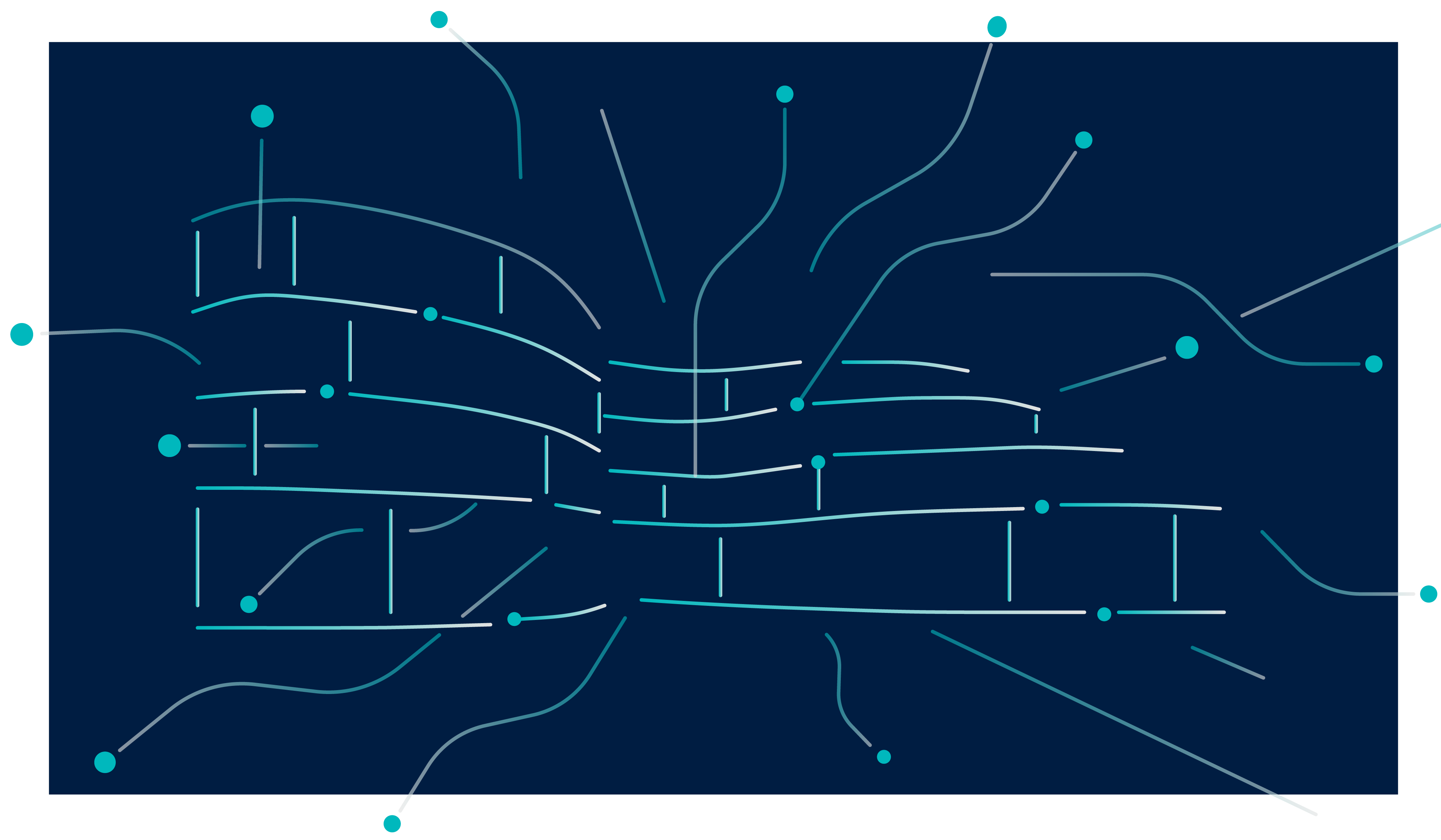
What if a building could be more than just a place to work; what if it could be a partner? By integrating biometric technology as a core nervous system, buildings are beginning to develop a form of intent.
Imagine walking into your office building. Before you reach for your ID, the main door glides silently open. The lobby greets you not with a generic, blasting AC, but with a gentle, personalized airflow. The elevator is already called and the lighting to your preferred workstation subtly brightens to your ideal spectrum, proven to boost your focus. Your first meeting of the day is already confirmed – the office room knew you’d arrived.
This isn’t a scene from a science fiction movie; it’s the imminent future of biometric architecture, where buildings don’t just house us; they recognize, respond to, and even think with us.
The Nervous System: Biometrics as Foundational Infrastructure
The core of this evolution is biometric technology. Moving beyond keycards and PIN codes, biometrics like facial recognition, voice recognition, fingerprint recognition, and even behavioral patterns will form the foundational nervous system of these cognitive spaces. The building’s infrastructure becomes a seamless interface between the physical environment and human well-being.
A Philosophical Question: Can a Building Have Intent?
As we embed more and more intelligence into our buildings, a philosophical question emerges: Can a building have intent? This is not about a building suddenly developing consciousness in the way humans understand it. Rather, it is about the aggregation of data and algorithmic decision-making reaching a point where the building’s actions appear purposeful.
“The building’s infrastructure becomes a seamless interface between the physical environment and human well-being.”
When a building adjusts airflow to match your body temperature or dims the lights because it detects a meeting, it exhibits predictive and responsive logic at the core of occupant-centric building control frameworks that anticipate needs rather than merely react to them.
This creates a compelling new reality for designers: we are no longer just creating static shelters; we are shaping entities that will have a form of operational “will” and “personality”. The building’s intent will be a direct reflection of the values and design choices we embed in its code.
This inherent power, however, brings with it a significant ethical responsibility. The line between helpful intelligence and pervasive surveillance is very thin. Therefore, it is crucial to uphold ethical considerations and clearly differentiate between biometric intelligence and surveillance by:
· Decentralized Data: Processing biometric data at the edge (on the device itself) rather than in a central server, ensuring raw data is never stored or transmitted.
· Consent and Transparency: Occupants of the building must have clear, granular control over what data is collected and how it is used.
· Purpose-Limited Use: Data collected for security, like facial recognition for access, must be siloed and not used for unrelated purposes, such as measuring productivity or tenant analytics.
The building’s intelligence must serve the occupant, not the other way around. It’s about creating a respectful, symbiotic relationship between people and place.
From Smart Homes to Sentient Campuses
The shift from individual smart homes to fully interconnected, sentient campuses is not a speculative fantasy but a logical next step driven by converging technological and economic forces. While early smart buildings focused on automating single-site systems for energy efficiency and security, the next evolution is about scaling intelligence to create a cohesive, responsive urban ecosystem. This trajectory is fueled by three key drivers: the commoditization of technology, the demand for holistic efficiency, and the emergence of a unified user experience.
“While early smart buildings focused on automating single-site systems for energy efficiency and security, the next evolution is about scaling intelligence to create a cohesive, responsive urban ecosystem.”
→ Technology as a Commodity
This shift is underpinned by the decreasing cost and broad accessibility of three key technologies:
- IoT Sensors: Devices that once cost hundreds of dollars are now affordable and can be embedded everywhere in trash cans, parking spots, and streetlights. This extensive sensor network generates a massive, real-time data flow, reflecting the operational metabolism of an entire campus.
- Artificial Intelligence (AI): AI has evolved rapidly in the last three years. Instead of sending all data to a distant server, AI can now analyze information on the spot. This not only makes decision-making faster but also significantly enhances data privacy and security by minimizing the need for data transfer, a crucial factor in building trust with occupants.
- High-Speed Connectivity: The deployment of 5G and other LPWANs delivers the essential bandwidth to link this vast network of sensors and devices. This enables real-time communication among buildings, infrastructure, and users, transforming previously isolated data points into a unified, interconnected nervous system.
→ Pursuing Comprehensive Efficiency
Moving from a single “smart” building to a “sentient” campus offers economic and environmental benefits that are simply not possible at a smaller scale. Individual buildings can optimize their own energy use, but a sentient campus can orchestrate resources across the entire network:
- Predictive Maintenance: Instead of a single building’s system flagging a potential issue, a sentient campus can use data from every HVAC unit to predict a campus-wide maintenance need. As a report from Forbes highlights, “predictive analytics can help detect potential failures before they occur,” allowing for proactive, coordinated repairs that reduce costs and prevent catastrophic failures.
- Energy Optimization: A sentient campus can dynamically manage energy consumption across multiple buildings. For example, it could dim the lights in a vacant office building and reroute that energy to an evening meeting, or coordinate HVAC systems to pre-cool a building before a large company event.
- Resource Management: This integrated strategy applies to all resources. Smart bins can indicate fullness, enabling optimized waste collection routes across the campus. Water pipe sensors can identify leaks preemptively, shifting management from simple automation to proactive, campus-wide oversight.
→ A Unified and Proactive User Experience
The final, and perhaps most compelling, reason for this evolution is the ability to create a truly seamless and personalized user experience. Unlike a smart home designed for a single family, a sentient campus can identify and interact with thousands of individual occupants. The system transforms from disparate applications into one cohesive, intelligent entity.
“The final, and perhaps most compelling, reason for this evolution is the ability to create a truly seamless and personalized user experience.”
Imagine an employee’s effortless experience within a biometric building: security turnstiles open automatically, personalized climate settings activate in their office, and meeting room displays prepare for their arrival all without a keycard or manual input. Beyond individual convenience, the building’s intelligence can also coordinate emergency services by providing real-time incident location data and optimal routes for first responders.
Sentient Futures: Early Indications
While a fully sentient campus remains the ultimate goal, the foundational technologies and design philosophies are already being realized in groundbreaking projects around the globe. These early examples serve as living laboratories, demonstrating how biometric and integrated systems can transform the built environment and pave the way for a more intelligent future:
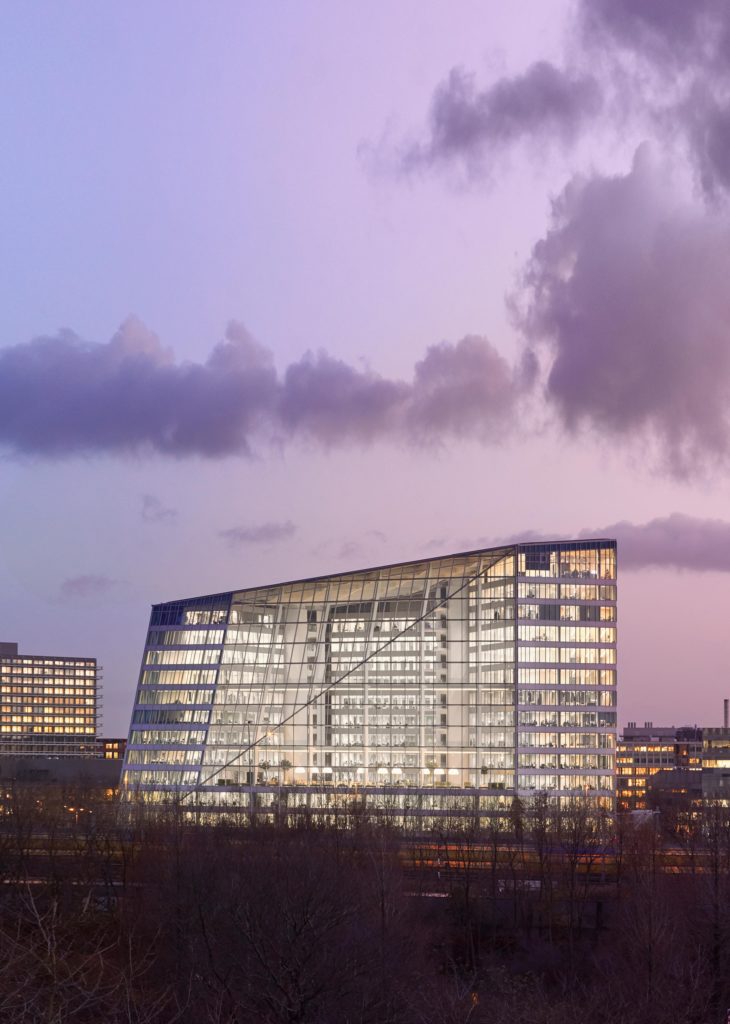
The Edge in Amsterdam: Often called the world’s smartest office building, it uses a vast IoT network and an app to learn worker preferences, directing them to available desks based on their schedule.
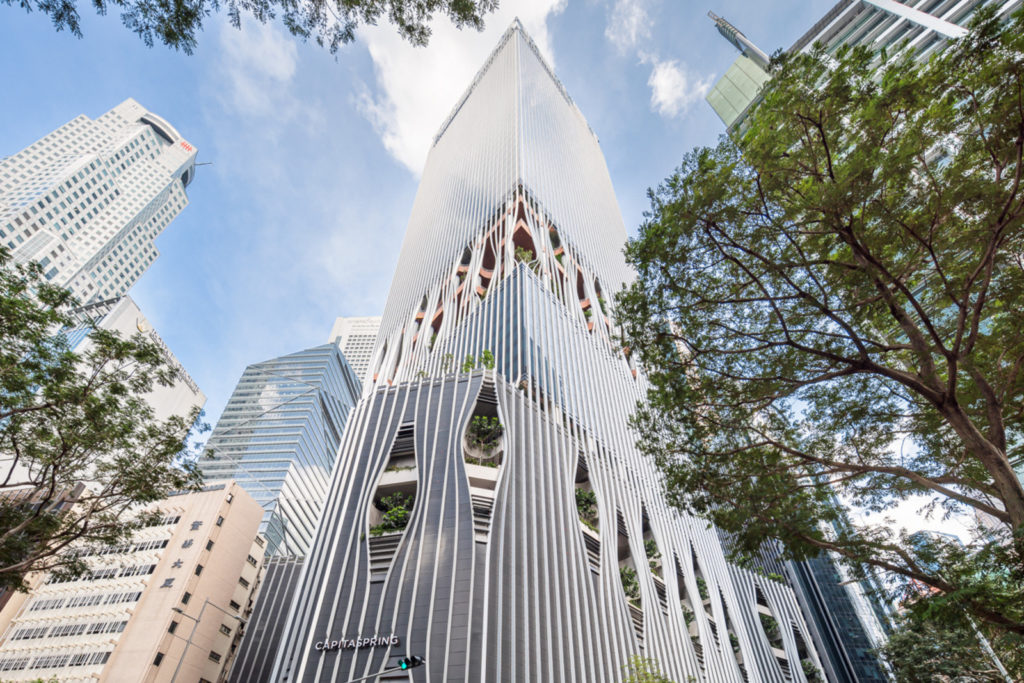
CapitaSpring in Singapore: This skyscraper uses automated louvres and a smart management system to respond to weather, temperature, and sunlight, creating an optimal microclimate.
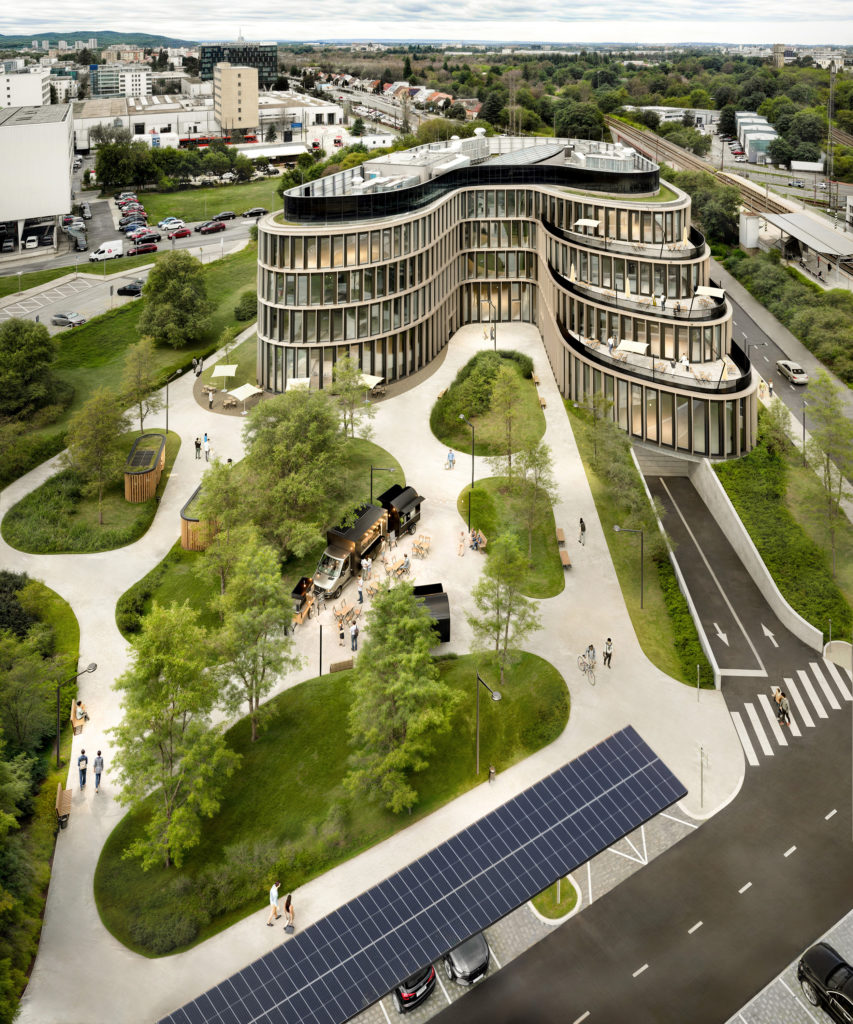
Innovatrics HQ in Bratislava: This building is set to become the most biometric building in the world. The goal is to use their in-house facial recognition software, fingerprint recognition, palm recognition and other cutting-edge biometric technology to build a building that knows who you are, adapts to your needs and lets you move seamlessly.
Building Intelligent, Responsive Spaces
The future belongs to those who build it. For architects, developers, and integrators, the mandate is to build not just efficient structures, but intelligent, responsive partners in human endeavor. To get there, each stakeholder must embrace a new set of responsibilities.
→ From Master Planners to Systems Orchestrators
Architects are increasingly becoming choreographers of the interplay between human and technological elements, rather than just master planners of physical space. Their central objective is now to design environments that can adapt and grow in tandem with their digital aspects.
- Design for Flexibility and Adaptability: Architects must abandon rigid floor plans in favor of modular, adaptable designs. This means specifying building materials and layouts that can be easily reconfigured to accommodate new technologies and evolving needs.
- Embrace Human-Centric Integration: Technology should seamlessly support occupants’ well-being, acting as a silent partner rather than a flashy distraction. This means architects should design spaces where technology, like predictive lighting that adapts to circadian rhythms or automated natural ventilation systems, remains nearly invisible.
→ Designing Trust Into Tomorrow’s Buildings
Real estate developers are not just building owners; they are investors in data-driven ecosystems. Their mandate is to ensure that these valuable new assets are built on a foundation of trust, not just technology.
- Establish a Robust Ethical Framework: Before breaking ground, developers must define clear policies for how occupant data will be collected, stored, and used. This requires active collaboration with ethicists, privacy lawyers, and cybersecurity experts.
- Build for Long-Term Value: A sentient building offers more than just initial construction benefits. Developers should consider the entire lifecycle of a building, focusing on its capacity to create continuous value. This value is realized through improved tenant experiences, reduced operational expenses, and increased market worth.
→ From Systems to Symphonies: The Integrator’s Craft
Integrators are the nervous system’s engineers, responsible for making the building’s brain function as a cohesive whole. Their mandate is to connect disparate systems and ensure they can “speak” a common language.
- Ensure Interoperability: The greatest threat to a building’s intelligence is proprietary “data silos.” Integrators must champion open standards and APIs (Application Programming Interfaces) to ensure that systems from different vendors from HVAC to access control can communicate seamlessly.
- Prioritize Security by Design: As the central nexus of a building’s data, integrators must treat security as an architectural principle, not an afterthought. This involves implementing “defense in depth” and “least privilege” across all systems, from initial network design through ongoing maintenance.
From Speculation To Reality
The technology to begin this journey is already here. But the real question is: what kind of future will we design with it? Architects, developers, and integrators hold the keys to transforming cities into living, breathing ecosystems, places that anticipate needs, respect privacy, and elevate everyday life. This is no longer a speculative dream. It’s an unfolding reality, waiting for bold choices and collaborative imagination.
“These thinking buildings are less about artificial minds and more about amplified care, where intelligence is woven into walls, air, and light to serve the people within.”
The future is about creating environments capable of responsive, intentional action adjusting to people’s rhythms, protecting their well-being, and anticipating their needs. These thinking buildings are less about artificial minds and more about amplified care, where intelligence is woven into walls, air, and light to serve the people within.
AUTHOR: Aleksandra Krstevska
PHOTOS: CapitaSpring; The Edge






